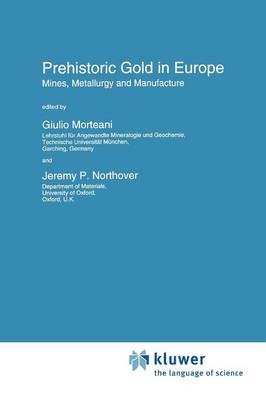Nato Science Series E:
1 primary work
Book 280
Prehistoric Gold in Europe
Published 30 November 1994
Interest in the study of early European cultures is growing. These cultures have left us objects made of gold, other metals and ceramics. The advent of metal detectors, coupled with improved analytical techniques, has increased the number of findings of such objects enormously. Gold was used for economic and ceremonial purposes and thus the gold objects are an important key to our understanding of the social and political structures, as well as the technological achievements, of Bronze and Iron Age European societies.
A correct interpretation of the information provided by gold and other metal objects requires the cooperation of experts in the fields of social, materials and natural science. Detailed investigation of gold deposits in Europe have revealed the composition and genesis of the deposits as sources of the metal.
In Prehistoric Gold in Europe, a group of leading European geoscientists, metallurgists and archaeologists discuss the techniques of gold mining and metallurgy, the socioeconomic importance of gold as coinage and a symbol of wealth and status, and as an indicator of religious habits, as well as a mirror of trade and cultural relations mirrored by the distribution and types of gold objects in prehistoric times.
A correct interpretation of the information provided by gold and other metal objects requires the cooperation of experts in the fields of social, materials and natural science. Detailed investigation of gold deposits in Europe have revealed the composition and genesis of the deposits as sources of the metal.
In Prehistoric Gold in Europe, a group of leading European geoscientists, metallurgists and archaeologists discuss the techniques of gold mining and metallurgy, the socioeconomic importance of gold as coinage and a symbol of wealth and status, and as an indicator of religious habits, as well as a mirror of trade and cultural relations mirrored by the distribution and types of gold objects in prehistoric times.
